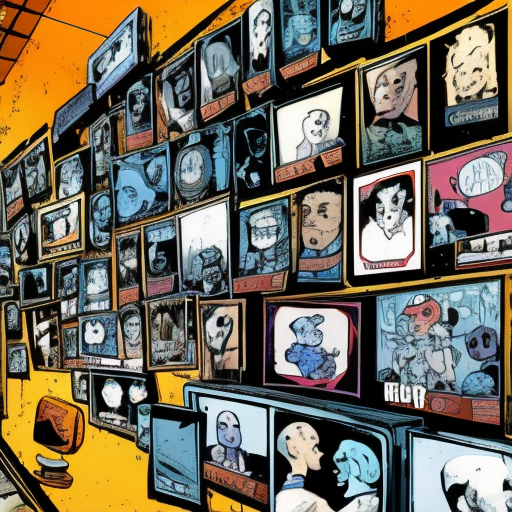While this East-West schism shook geopolitics and the History Company pursued their quest to historize the world, the Human Data Corporation was trying to figure out its own future. They didn’t want to completely depend on their former colleagues, but still believed that History would revolutionize the world, becoming the main storage of human information and the principal way to consume and create media.
That centralization led to the disruption of most existing forms of media. Music, movies, broadcast or streaming; everything would be generated and consumed inside History. Media companies who could not adapt started disappearing, leaving behind huge amounts of content which the Corporation bought and moved into a Protohistoric Archive, the biggest collection of information outside of History. Whether it was digital, magnetic, optical or physical media, it didn’t matter; everything was archived and, most importantly, not historized. Becoming the gatekeepers to old-media was the first part of their strategy, as they speculated that protohistoric information would only increase in value with time.
The second part consisted in turning everyone into a content creator. As History took over the world, suddenly everyone became content without realizing it: just walking into a public space made you, and whatever you did, immediately available for the whole world to see. Under the motto “live your History, live”, the Corporation offered everyone the possibility to be curators of moments and places. You could be in the middle of conflicts and report news in real time; engage in (premeditated) random acts of kindness with strangers; kill animals, other people or yourself; propose to your loved one in front of the whole world (and be rejected); engage in your favorite BDSM acts; do nothing at all, or just react to people doing all of the above. People could now enhance, tag, post-produce and forever historize any of their actions and, most importantly, monetize them. Of course, with a slice of those earnings going to the Corporation.
(As an interesting side effect, deep fakes, which had become a serious problem by then, stopped being an issue almost overnight, as people questioned anything that they could not check through History. Is a tree really felled, if the fall was not historized?)
Of course, these developments didn’t come without issues. Many people were not happy about appearing in public History without having agreed to it, and being erased was simply not an option. Privacy controls were very rudimentary, and neither the History Company, struggling with their finances, nor the Human Data Corporation, profiting from content creation, were willing to invest much to change that.
As Anti-History sentiment grew. Social organizations demanded government intervention, but western governments were in a delicate position: if they agreed to the demands for stronger controls, they could not continue criticizing its Asian rival, which they had labeled as anti-democratic and censored. Their hesitance led to increased resistance and violence from the protohistoric movements.
Publicly, the Human Data Corporation and The History Company blamed each other for the situation. In private, they were tending bridges and reaching secret non-compete agreements. After all, they still shared some core investors, and all that really mattered was keeping their shareholders happy.
